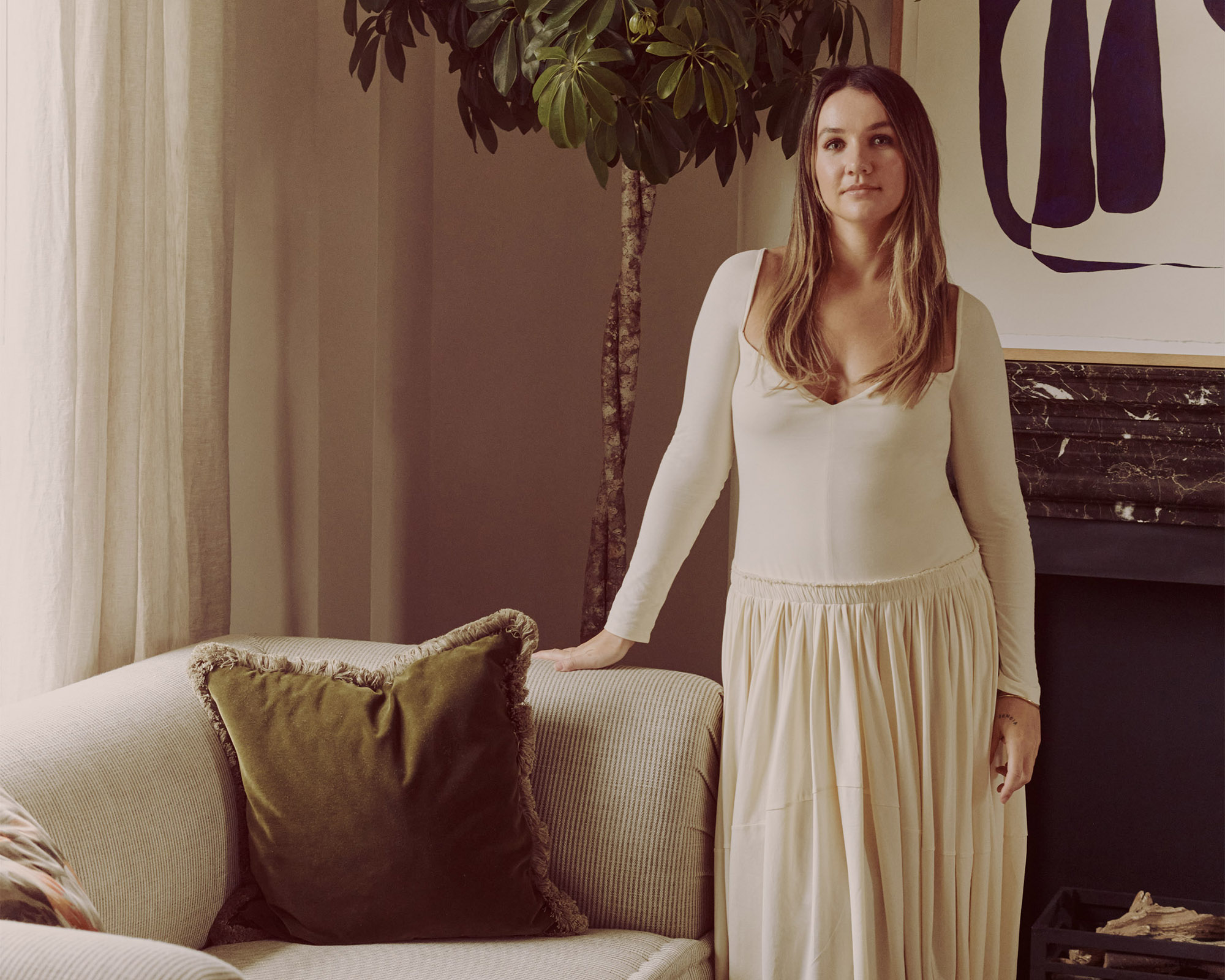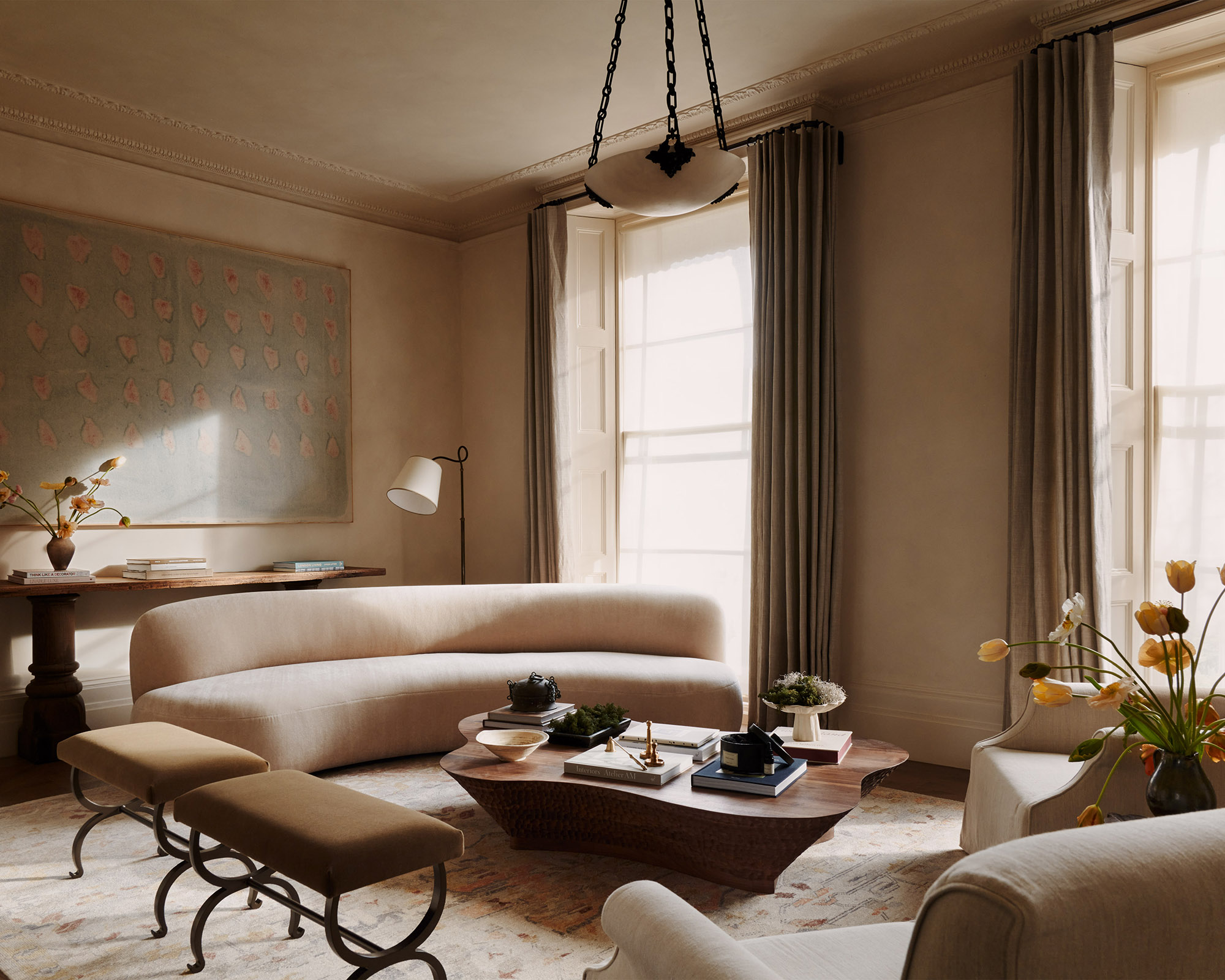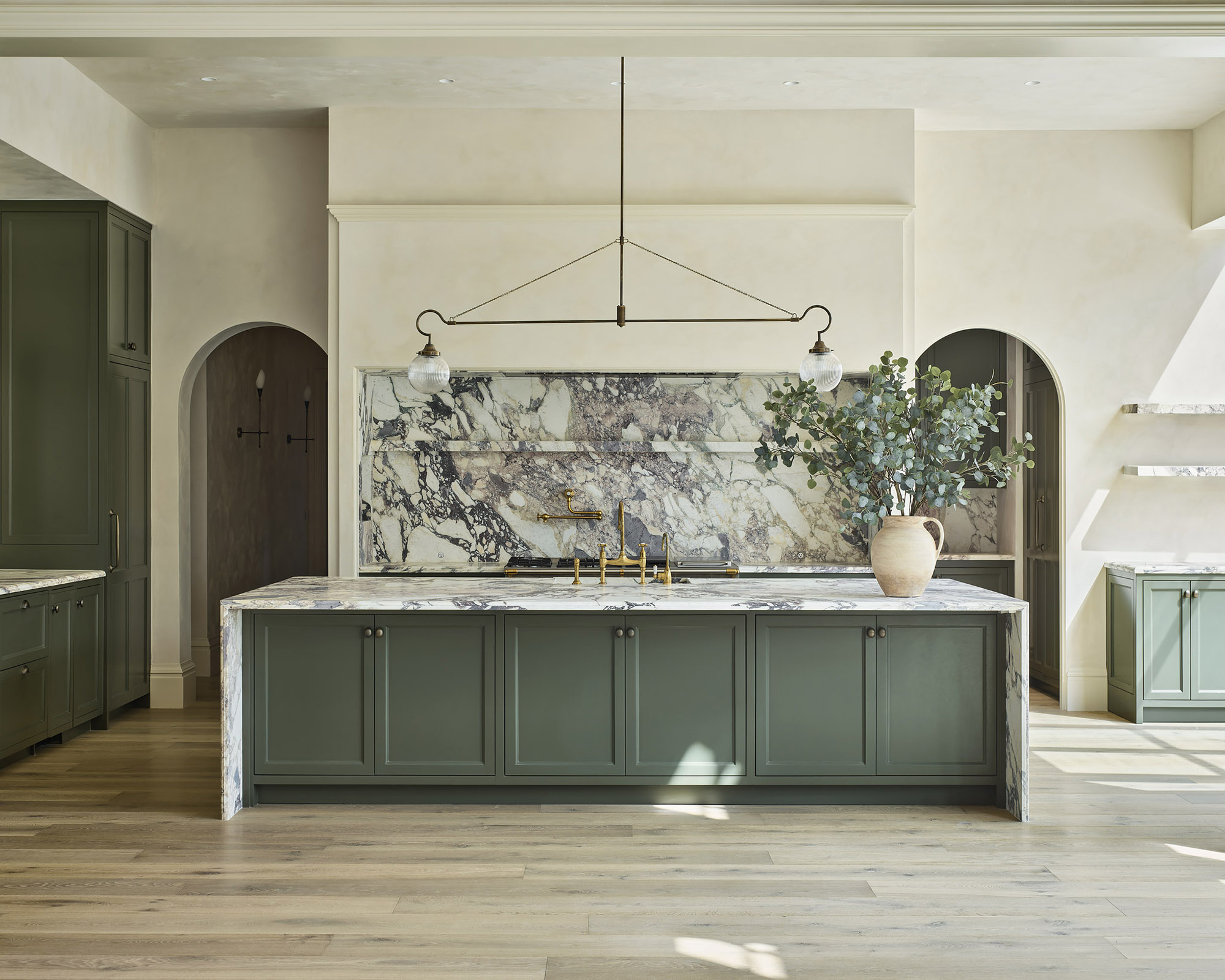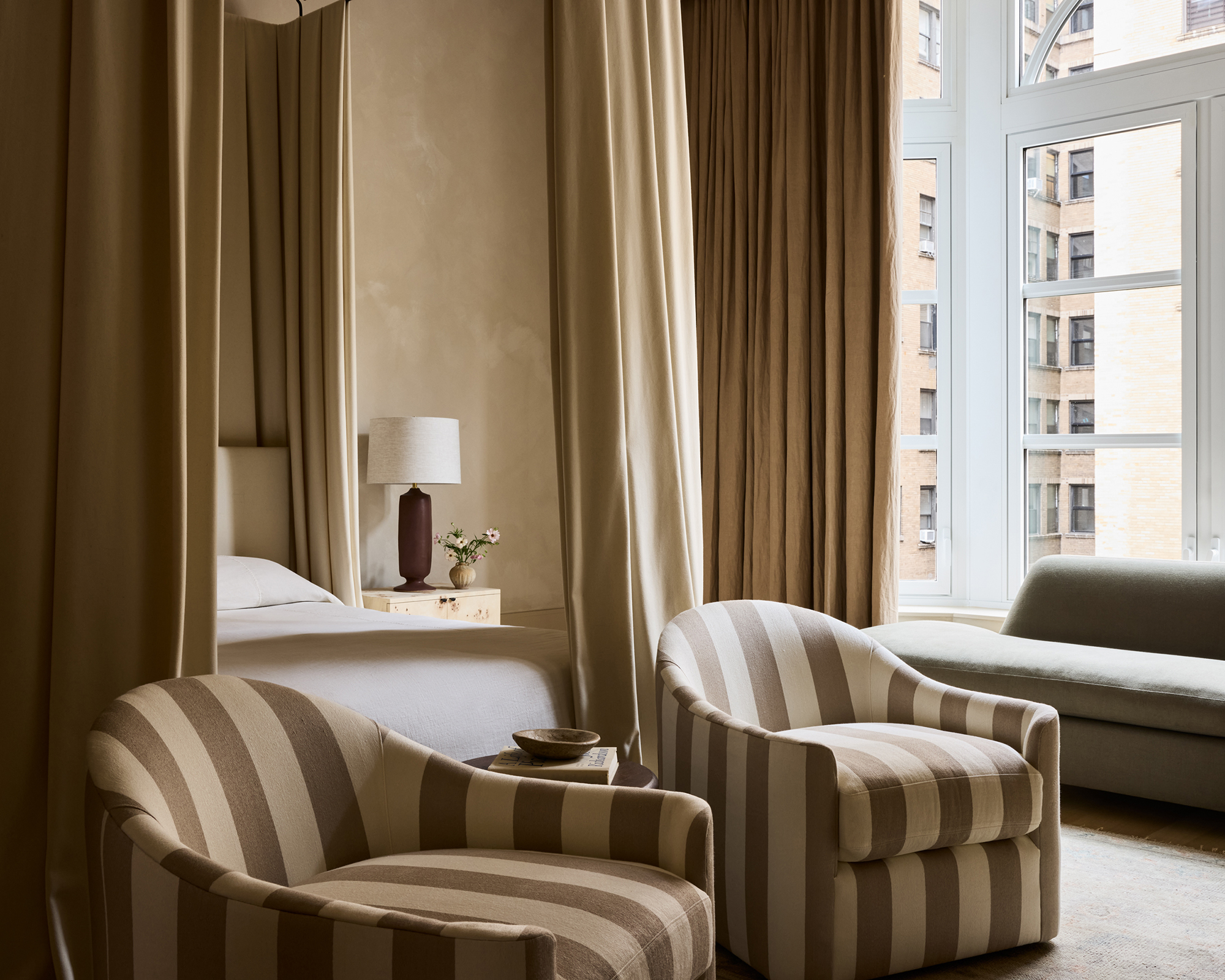‘I’m certainly not a minimalist!’ Katie Harbison on achieving calm and serenity in a fully lived-in home
Designer Katie Harbison knows how to infuse rooms with character while maintaining the calm, serene qualities often associated with minimalism. Here’s how she does it

Katie Harbison is the founder and creative force behind her eponymous design studio, renowned for interiors that marry architectural integrity with warm, contemporary elegance. With a background that blends classical influences and a love for Californian ease, Katie approaches each project by honoring the building’s original bones – reinstating lost period details and ensuring the architecture flows seamlessly into the interiors. Her work is celebrated for its tactile materiality, thoughtful restraint, and the way every room feels both curated and effortlessly livable.
Whether reimagining a historic New York townhouse or bringing character to a modern build, Katie’s signature lies in the artful juxtaposition of vintage treasures and refined modern lines: plush, deep seating alongside smooth marble bars; ornate architraves paired with softly curved sofas. Inspired by Renaissance symmetry and old-world craftsmanship, yet guided by a Californian sensibility for light, space, and natural materials, her rooms evoke calm, beauty, and subtle surprises.
In this conversation, Katie shares the principles behind her work – from her love of marble and limewash to the importance of negative space, balance, and the little unexpected touches that elevate a home from stylish to unforgettable.

How do you begin designing a room? Do you start with a feeling, a color, or perhaps a piece of furniture?
It always starts with the architecture. Cohesion throughout the home is key – you don’t want the facade to feel disconnected from the interiors, so we focus on keeping those details consistent. I’m currently working on a townhouse in New York and aim to reinstate its original grandeur, restoring the moldings, replicating the skirtings, and adding panels and ceiling roses that are as close to the original as possible. From there, we bring in a Californian sensibility for the furniture and accessories – soft linens, comfortable textures, and a mix of vintage and new pieces that create a relaxed yet refined balance.
How would you describe the Californian aesthetic that influences you?
It’s about deep, comfortable seating, natural woods, soft palettes, and a focus on materiality rather than fussiness or ornamentation. I wouldn’t call myself a minimalist – I love sourcing treasures and filling shelves with them – but I balance that abundance with smooth, refined, pared-back elements, like a full marble bar.
Design expertise in your inbox – from inspiring decorating ideas and beautiful celebrity homes to practical gardening advice and shopping round-ups.
How might you design a modern house that doesn’t offer the same freedom to play with period details?
I look for other ways to introduce character throughout the home. Maybe it’s through curved arches, which are then echoed in sofas and coffee tables, softening the sharp angles of a newer build. Ultimately, it’s always about finding balance – that’s the key.

What’s the one element that you think every room needs, no matter the size or style?
Marble, without a doubt – I adore it. I’m also using a lot of limewash and plaster on the walls for their rich texture. Our base palette is usually neutral, in soft bone tones, but in spaces like powder rooms, we often go for bold, immersive color. In the main living areas, we introduce color through the marble itself. I particularly love stone with mossy green veining, and I look for depth and subtlety rather than overly pronounced patterns.
As you say, you’re not a minimalist, but your spaces are still very pared back, with each item given room to be appreciated. How do you approach that balance?
When it comes to larger furniture pieces, I’m always conscious not to overcrowd a room. On shelves, I focus on negative space – it’s not about filling every inch, but about arranging objects with varied heights and shapes. I rarely aim for straight or linear lines; it’s more about creating a sense of rhythm and balance that feels effortless.

Are there any eras you continually find yourself drawn to for reference or ideas?
Absolutely, I’m particularly drawn to the Renaissance period. It’s richly ornate, and I love studying the details. Last year in Florence, Italy, I spent my time examining original architraves and how they were integrated with marble, baseboards, and doors. It was incredibly inspiring.
Is that same sense of wonder something you hope to inspire in the people who enter spaces you’ve designed?
I want people to feel calm and happy. It’s like the feeling you get on vacation when a hotel is thoughtfully curated and beautifully designed – it makes you feel comfortable and inspired. That’s what I aim to achieve in a home: a space that puts people at ease simply by being surrounded by thoughtful, well-considered design.
And lastly, what do you think people often overlook when decorating their homes?
Symmetry! This goes back to the Renaissance, where symmetry forms the foundation of design. I don’t believe everything needs to be perfectly symmetrical – I focus more on the alignment of elements like joinery and paneling. Then, it’s nice to include one or two unexpected touches within the room. Right now, I’m placing a small mirror in a formal drawing room where you might normally expect a larger piece. With so much already surrounding it, that little surprise creates balance and gives the space a subtle lift.
See more of Katie's work at Katie Harbison Interior Design
Pip Rich is an interiors journalist and editor with 20 years' experience, having written for all of the UK's biggest titles. Most recently, he was the Global Editor in Chief of our sister brand, Livingetc, where he now continues in a consulting role as Executive Editor. Before that, he was acting editor of Homes & Gardens, and has held staff positions at Sunday Times Style, ELLE Decoration, Red and Grazia. He has written three books – his most recent, A New Leaf, looked at the homes of architects who had decorated with house plants. Over his career, he has interviewed pretty much every interior designer working today, soaking up their knowledge and wisdom so as to become an expert himself.

